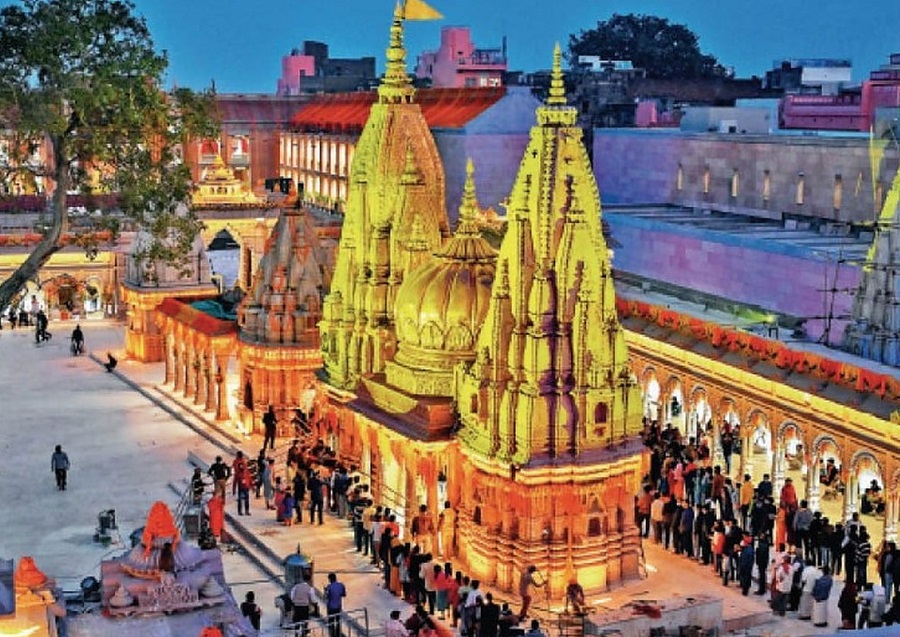Varanasi, or Banaras, (also recognized as Kashi) is one of the oldest residing cities in the world. Varanasi is so old that it can be a part of Indian mythology and finds pointed out in the epics Ramayana and Mahabharata. Via the ages, Varanasi was also known variously as "Avimuktaka", "Anandakanana", "Mahasmasana", "Surandhana", "Brahma Vardha", "Sudarsana", "Ramya" and "Kasi" or Kashi - 'the Town of Light". The oldest residing metropolis in the globe, Varanasi could be the final location of all Hindu pilgrims searching for moksha from the cycle of birth and re-birth. The term ‘Kashi’ originated from your phrase ‘Kas’ which means to shine. Stepped in custom and mythological legacy, Kashi is the ‘original ground’ developed by Lord Shiva and Parvati, upon which they stood at the start of time. Varanasi is said to become the position at which the first Jyotirlinga, the fiery pillar of light by which Shiva manifested his supremacy more than other Gods, broke using the earth's crust and flared in the direction of the heavens. Compared to the Ghats and even the Ganga, the Shivalinga installed in the temple continues to be the devotional focus of Varanasi. It's open up only to Hindus.
Located amidst the crowded lanes of Varanasi, the temple of Vishwanath might be approached from a lane named Vishwanatha lane. Inside the courtyard may be the temple of Vishwanath surrounded by numerous subsidiary shrines. It is inside the heart of this metropolis that there stands in its fullest majesty the Kashi Vishwanath Temple that is enshrined the Jyotirlinga of Shiva, Vishweshwara, or Vishwanatha. The Kashi Vishwanath Temple, also identified as Golden Temple is the most sacred and main temple of Varanasi and it can be devoted to Lord Shiva or Vishweshwar (Vishwanath), the presiding deity of the metropolis.
It is much more popular due to the Gold plating done on its 15.5-meter substantial spire. 1 ton of gold donated by Maharaja Ranjit Singh has been employed inside the gold plating of the spire. The original temple was situated across the street, but it was destroyed by Aurangzeb who built a mosque in its place, but the traces of the aged temple could be seen at the rear of the mosque. The present temple was developed by Ahilyabai of Indore in 1776. This mosque has minarets towering 71 meters over the Ganges. Now the brand new Vishwanath Temple situated on the premises of Banaras Hindu University is managed by the reputed industrialists - the Birla loved ones.
About the Deity
Situated amidst the crowded lanes of Varanasi, the temple of Vishwanath might be approached from the lane named Vishwanatha lane. Within the courtyard will be the temple of Vishwanatha surrounded by a lot of subsidiary shrines. There is a well, called Jnana Vapi i.e. wisdom nicely located to the north in the principal temple. As one enters the temple from the southern facet the first time towards the left in the pilgrim are three temples in a row one driving one other, Vishnu, Virupakshi Gauri, and Avimukta Vinayaka. A cluster of five Lingas enclosed in a temple is known as Nilakantheshvar temple. Just over the Avimukteshwara Vinayaka are temples of Shanishchara and Virupaksha. To the correct just near the entrance is the temple enshrining a linga referred to as Avimukteshwara. There is a controversy relating to the original Jyotirlinga at the location, which indicates that not the Vishwanatha but the Avimukteshwara will be the authentic Jyotirlinga.
The Golden Temple or Kashi Vishwanath Temple dedicated to Lord Shiva was constructed by Ahilyabai of Indore in 1776 and 800 kg of gold plating on the towers was provided by Maharaja Ranjit Singh of Lahore. The Shivlinga inside the temple will be the primary devotional concentration of the metropolis. Next to the Temple is Well-known because of the Gyan Kapur Kuan (nice of expertise). This temple was renovated by Maharani Khaneti, spouse of Sudarshan Shah in 1857.
The temple includes a Shivling (60 cm. large and ninety Cm. Circumference). People from all over India do also go to the Vishwanath temple in the course of their visits to Uttarkashi, Gangotri, and Yamunotri. The Vishwanath temple includes a mandapa along with a sanctum. Inside the sanctum, a linga is set into the middle of the flooring inside a square silver altar. The Linga is of black stone. Although the interior of the temple just isn't big and elaborate it presents a peaceful ambiance perfect for worship.
Background
The Vishwanath temple was, even so, destroyed by the Mughal Emperor Aurangzeb who built the Gyanvapi Mosque making use of columns in the authentic temple razed by Aurangzeb. Even right now the western wall of the mosque displays the minarets towering 71 meters previously mentioned the Ganges of the temple which had extremely intricate and great artwork on it. The Kashi Vishwanath and the Gyanvapi mosque are adjacent to each other. Here gravitate teeming countless India to look for benediction and spiritual peace with the Darshan of this Jyotirlinga which confers liberation in the bondages of Maya and also the inexorable entanglements from the globe.
A simple glimpse from the Jyotirlinga is a soul-cleansing experience that transforms lifestyle and puts it on the route of expertise and bhakti. Vishweshwar Jyotirlinga has a really special and special importance in the spiritual background of India. Tradition has its merits earned with the Darshan of other Jyotirlinga scattered in numerous elements of India accrue to devotees by a single go to Kashi Vishwanath Temple. Deeply and intimately implanted within Hindu thoughts, the Kashi Vishwanath Temple continues to be a residing embodiment of our timeless cultural traditions and best spiritual values.
The Temple has been visited by all fantastic saints- Adi Shankaracharya, Ramakrishna Paramhansa, Swami Vivekananda, Goswami Tulsidas, Maharshi Dayanand Saraswati, Gurunanak and numerous other spiritual personalities. The Kashi Vishwanath Temple attracts visitors not simply from India but overseas also and thus symbolizes man's wish to reside in peace and harmony with one an additional. Vishwanath becoming a supreme repository of this spiritual real truth, therefore, strengthens the bonds of universal brotherhood and fellow feeling at the national as well as global levels.
On January 28, 1983, the Temple was taken more than from the Govt. of Uttar Pradesh, and its administration ever since stands entrusted to some Have faith in Dr. Vibhuti Narayan Singh. Former Kashi Naresh, as president and an Executive Committee with Divisional Commissioner as Chairman. The Temple inside the present form was constructed way back again in 1780 by the Late Maharani Ahilyabai Holkar of Indore. In the 12 months of 1785, a Naubatkhan was constructed up in front of the Temple through the then-collector Mohd. Ibrahim Khan at the instance of Governor Common Warren Hastings.
Two domes from the Temple were coated with 800 kg of gold, plating around the towers, donated by Punjab Kesari Maharaja Ranjit Singh Some fifty a long time later. 3rd dome but remained uncovered, Ministry of cultures & Religious affairs of U.P. Govt. took a keen interest in the gold plating of 3rd dome of the Temple. The five Aaratis of Mahadev are quite famous.
At this time Shiva is decorated with leaves shaded under a large cobra. Thousands of people come in this time to pay a visit to the decorated Vishwanath. Kashi Vishwanath Shiva Lingam in Golden Temple, which has noticed many of its destructions could be the symbol of the mysterious cosmos, which attracts a lot of thousands of Hindus to offer Ganges water daily. It's the belief of the individuals of Banaras that Baba Vishwanath is responsible for the happiness and sadness in the lives of the people of Banaras.
The Legend
Legend maintains that Lord Shiva manifested himself in the form of the lingam at 12 holy cities in India, with Varanasi getting one of them. These lingams are known as JYOTIRLINGAMS. Towards the facet of the temple is Gyan-Kupor ('The nicely of Knowledge'). The Jyotirlingam in the authentic Vishwanath Temple is believed to become hidden inside the properly by his devotees to protect it from early Muslim invaders.
About the Puja - Archana
The pilgrims pay a visit to the temple any time of the day and worship the Lord by offering flowers and Bilva leaves and chanting the mantras of Shiva. Daily five times the Aarti is performed. The evening Aarti is recognized as Shringar Aarti. Throughout this Aarati the linga is decorated with a variety of flowers. The temple is kept open up from 5.30 in the morning and stays so till noon.
The temple usually remains closed in the course of the noon hours and reopens at 4 p.m. The temple closes inside the night after the last pujas are performed by 8 p.m. The Temple closes at 11 p.m. Most of the prasad, milk, clothes and other such offerings are given to the poor.











0 Comments